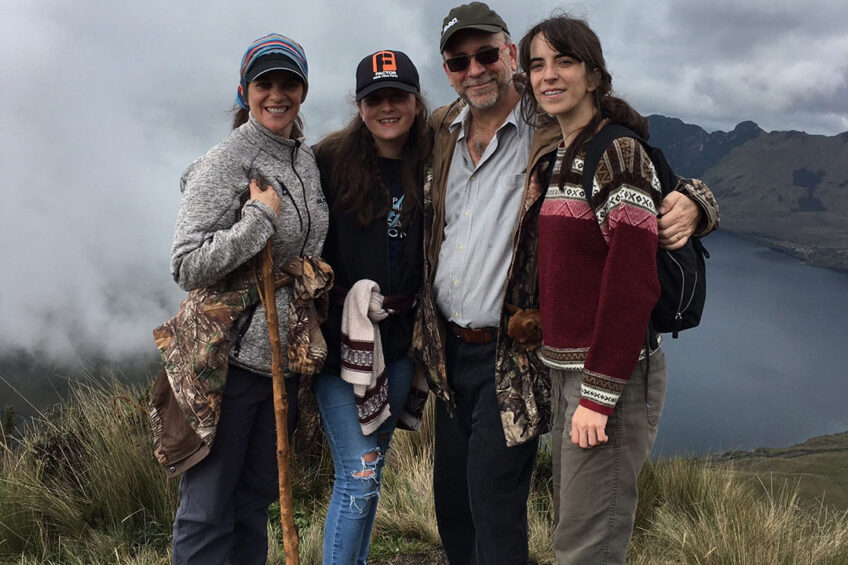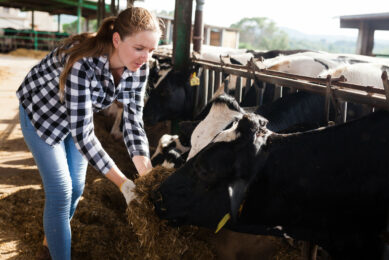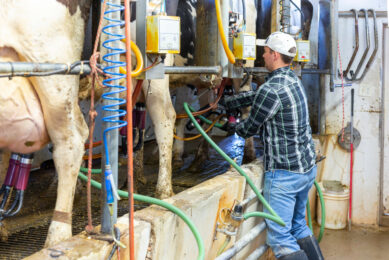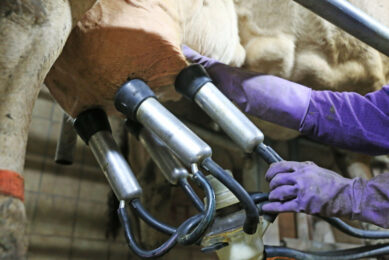Ecuador: Dairy farming at the highest point

Fabian Eguiguren is a dairy farmer in Cayambe, Ecuador, located around 80km from the capital of the country, Quito. His farm is located at 3200 m above sea level.
Fabian Eguiguren and his wife (Ana) come from families with a long history of milking and agricultural activities. Nevertheless, they only started their own dairy farm 10 years ago with a small operation producing less than 300 kg/day and 10 hectares at 3200 metres above sea level. Currently they have expanded to 120 hectares and produce on average 3000 kg/day with 156 milking cows. They are still waiting to see when this becomes profitable.


From Holstein to triple breed cows
“Producing at this altitude has been a challenge, as our cows are grass fed and production is free-stall, resulting in daily walks in excess of 3 km from the pastures to the milking room. When we started our production, we relied mostly on the Holstein breed. However, in order to increase their resistance to the altitude and energy requirements and hence reduce the mortality rates due to “mal de altura” (heart problems), little by little we switched to a triple breed (holstein, ayrshire, and brown swiss), which has dramatically reduced mortality rates and improved fertility performance.


Calves are housed outdoors
The average yield of Mr Eguiguren’s cows is 20 kg/day with 4.2% fat and 3.2% protein, with less than 25,000 somatic cell count. The cows receive 18kg of dry matter including balanced feed (2kg- 40% maize) and several types of grass, mostly American, including ryegrass and other perennial species. The calves are kept on open air corals and fed with up to 4 kg of milk per day. “Previously we used to keep them in closed stables in order to protect them from the cold weather. Unfortunately this resulted in several cases of pneumonia, diarrhoea and other illnesses that were solved once we started to grow them in open spaces from birth. We now inseminate the cows with an approximate weight of 350 kg and 17 months of age.”


High labour costs
Ecuador unfortunately has a low milk per capita consumption (approximately 80 kg/yr per person) which makes it difficult for farmers to continue to grow their production. Although local prices are high for international standards (US$ 0.46 and higher depending on the solids content and CCS), local production costs are very high (labour, fertilisers, balanced feeds, etc.) and financing for capital investments is almost non existent as interest rates are in the range of 12-16% in dollar terms with maximum 5 years of financing, making it difficult to mechanise most of the processes in an efficient manner. This, in turn, results in high labour costs which are normally composed on an unskilled work force that requires continuous close supervision and training. “We currently have approximately 12 employees in our farm, including 4 dedicated to milking operations on rotating shifts. This is further affected by poor road access to most of the production farms, creating in certain cases limited options to sell to regional plants outside the area of their influence,” says Fabian.


Most farmers have less than 10 cows
Most of the producers (over 2 million) in Ecuador are rural families with less than 10 cows with an average daily production of 5kg. “This makes the activity a highly sensitive one, with low income families relying heavily on this income for their sustainability. Producers with over 2,000kg/day probably represent less than 3% of the total producers, with many leaving the activity due to low profitability or constraints to place their production due to limited demand. On the industrialized side, there are approximately 10 well structured plants with regional concentration and daily processing throughput that ranges between 100,000 and 500,000 kgs per day. In our case, we are very pleased to sell to one of the largest plants in the region with a longstanding relationship”, Mr Eguiguren explains.


Next goal: 4,000kg per day
So what does the future hold for Mr Eguiguren’s farm? “We are currently working on best practices certification which would allow us to get better prices and be able to continue growing to our next goal: 4,000 kg/day which is probably the maximum we can produce in our existing property. We are aware that we need to reduce our production costs in order to remain competitive and therefore will continue working on the genetic selection of our cows, maximise productivity and maintain feed costs under control. Until then, we hope that all investments required will continue to come from the operation itself,” he says.










